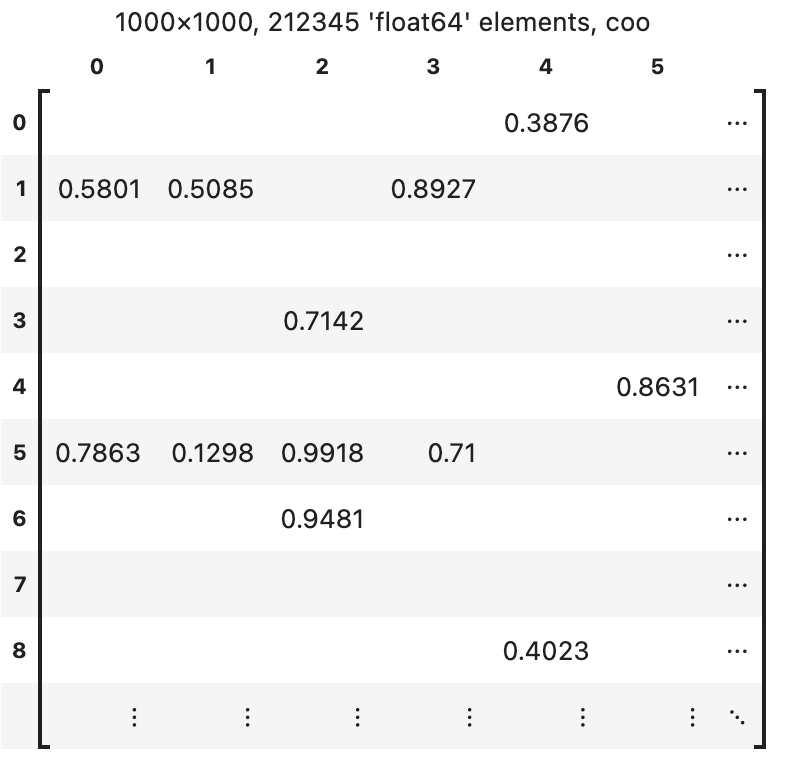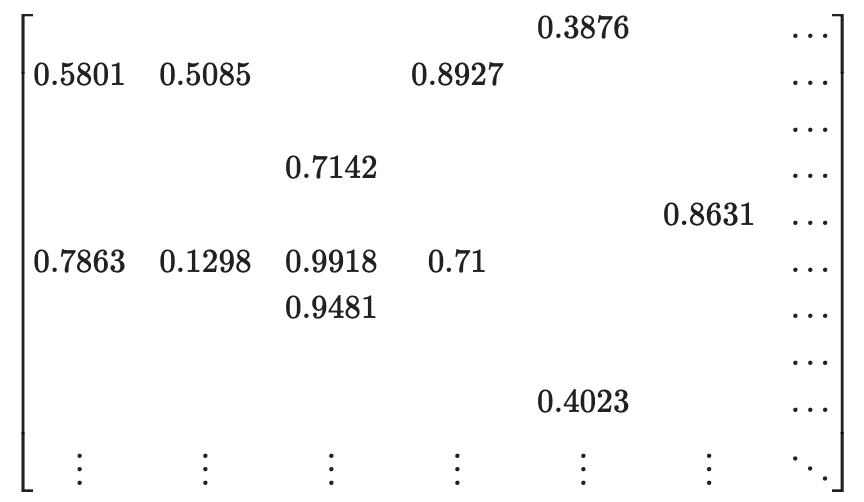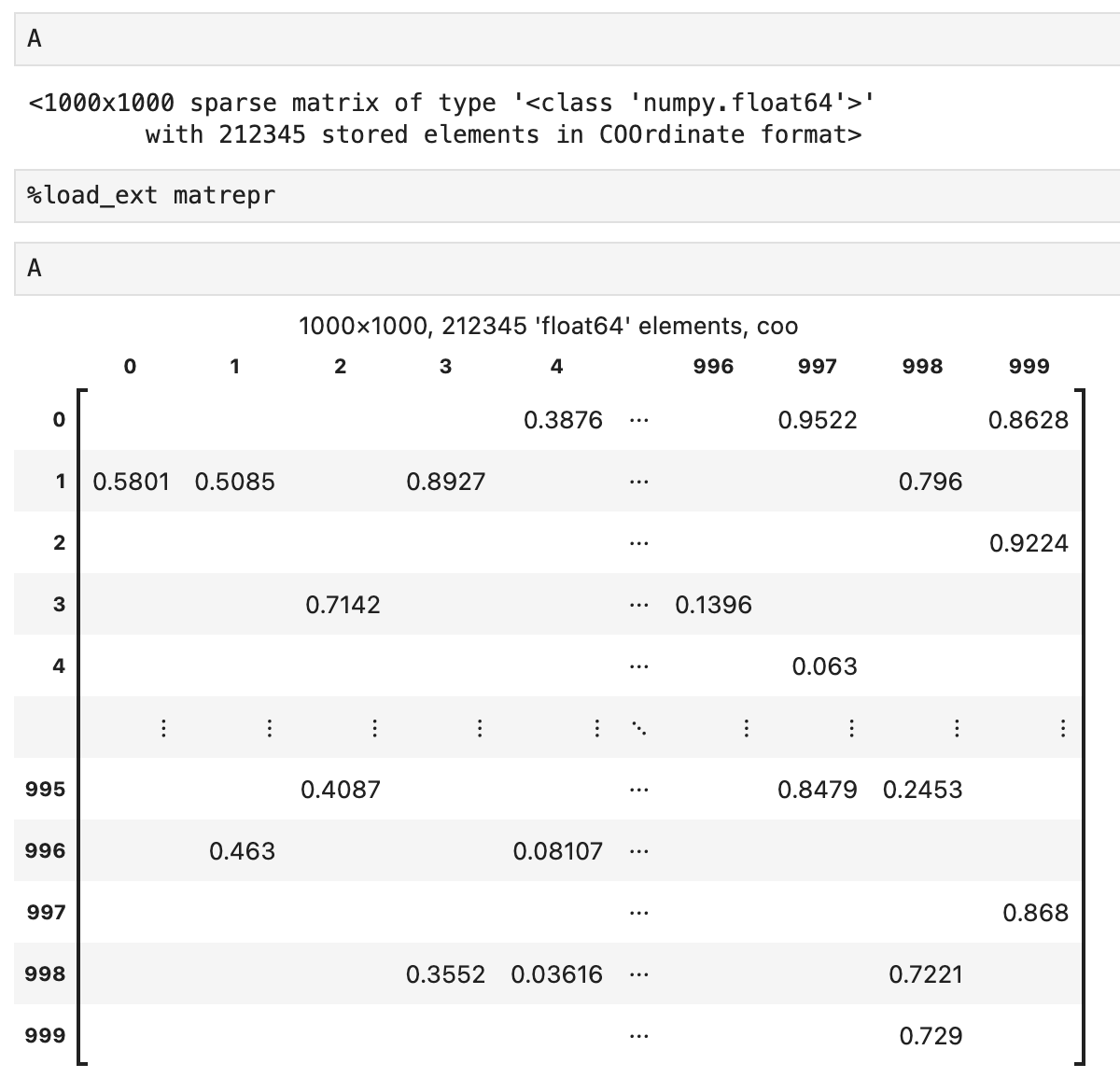Sparse matrix HTML and LaTeX rendering with Jupyter integration.
Project description
MatRepr
Sparse matrix HTML and LaTeX representation with Jupyter integration. For Spy plots see MatSpy.
Supports:
scipy.sparsesparse matrices and arrays likecsr_matrixandcoo_array.python-graphblassparse matrices and vectorslist,tuple
pip install matrepr
Purpose
Turn this opaque string:
<1000x1000 sparse matrix of type '<class 'numpy.float64'>'
with 212345 stored elements in COOrdinate format>
To one of these:
HTML
mdisplay(A), or simply A if Jupyter integration enabled. Use to_html() for raw HTML string.
LaTeX
mdisplay(A, 'latex'), or simply A if LaTeX version of Jupyter integration enabled. Use to_latex() for raw LaTeX string.
Quick Start
from matrepr import mdisplay
to_html(A): FormatAas an HTML table. Returns string.to_latex(A): FormatAas a LaTeX matrix. Returns string.mdisplay(A): Displays the output ofto_htmlorto_latexin Jupyter.
Jupyter Integration
MatRepr can integrate with Jupyter's formatter
to automatically format supported sparse matrix types. Simply import matrepr.jupyter to register MatRepr's formatter
with Jupyter.
import matrepr.jupyter
If you prefer LaTeX:
import matrepr.jupyter_latex
Arguments
All methods take the same arguments. Apart from the matrix itself:
title: string label. IfTrue, then a matrix description is auto generated that contains matrix shape, number and type of nonzeros, etc.indices: Whether to show matrix indices.max_rows,max_rows: size of table. Matrices larger than this are truncated with ellipses.precision: floating-point precisionnum_after_dots: How many rows/columns to show from the end of the matrix if the entire matrix does not fit.
Overriding defaults
matrepr.params contains the default values for all arguments.
For example, to always disable the title, disable indices, and only show the top-left part of the matrix:
matrepr.params.title = False
matrepr.params.indices = False
matrepr.params.num_after_dots = 0
How does it work?
Each package that MatRepr supports implements two classes:
Driver: Declares what types are supported and supplies an adapter.get_supported_types: This declares what types are supported, as strings to avoid unnecessary imports.adapt(A): Returns aMatrixAdapterfor a matrix that this driver supports.
MatrixAdapter. A common interface for extracting relevant matrix data. MatRepr supports three kinds:MatrixAdapterRow: is able to efficiently read a selected row.MatrixAdapterCol: is able to efficiently read a selected column.MatrixAdapterCoo: is able to extract a portion of the matrix as tuples.
See matrepr/adapters for details.
You may use matspy.register to register a Driver for your own matrix class.
Project details
Release history Release notifications | RSS feed
Download files
Download the file for your platform. If you're not sure which to choose, learn more about installing packages.

















